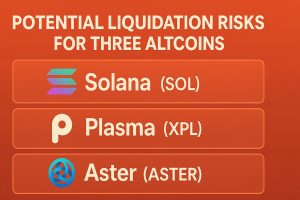The debt avalanche method has emerged as a favored strategy for individuals seeking to tackle their financial burdens efficiently. Unlike other debt repayment strategies, such as the debt snowball method, which focuses on smaller debts first, the debt avalanche aims to minimize the overall interest paid by prioritizing debts with the highest interest rates. This method can significantly accelerate the pay-off process, leading individuals to financial freedom more swiftly.
Market Impact
As consumer debt levels in the United States continue to hover near record highs—totaling over $16 trillion as of mid-2023—the relevance of effective debt repayment strategies cannot be overstated. The rising costs of living and fluctuating interest rates have only exacerbated this issue, prompting financial experts to encourage consumers to adopt more aggressive repayment tactics. According to a recent report from the Federal Reserve Bank, households often overlook strategies that can reduce long-term financial strain, with the debt avalanche method being a prime example.
By paying off high-interest debts first, consumers can save substantial amounts on interest payments, which can be especially critical in an economic climate where credit costs continue to rise. This approach appeals not only to those with credit card debt—which typically carries high-interest rates—but also to individuals managing student loans, personal loans, and other financial liabilities.
Steps to Create a Debt Avalanche Plan
To implement a successful debt avalanche plan, individuals should follow these straightforward steps:
1. **List All Debts**: Begin by cataloging every debt, including credit cards, loans, and any other outstanding balances. For each, note the total amount owed and the corresponding interest rate.
2. **Identify the Highest Interest Debt**: Sort the list in descending order based on interest rates. The debt with the highest percentage should be at the top.
3. **Allocate Extra Payments**: Determine a budget for debt repayment and distribute funds accordingly. While making minimum payments on all debts, allocate any additional funds to the debt with the highest interest rate.
4. **Repeat Until Paid Off**: Once the highest-interest debt is paid off, redirect those funds to the next highest debt, maintaining this process until all debts are cleared.
Expert Opinion
Financial advisors advocate for the debt avalanche method as it not only minimizes the total interest paid in the long run but also provides a psychological stimulus by enabling quicker pay-offs of the most burdensome debts. “The avalanche method allows debtors to focus their energy on the debt that is hurting them the most financially,” explains Alice Morgan, a certified financial planner based in New York. “By addressing high-interest debt first, individuals can experience a sense of accomplishment sooner and gain momentum in their journey to financial security.”
Moreover, many consumers can benefit from using budgeting tools or debt management apps that facilitate the monitoring and tracking of their progress. These resources can be invaluable in helping to visualize the current financial landscape and motivate individuals to stay disciplined in their repayment efforts.
Background on Debt Trends
The increase in consumer debt can largely be attributed to a variety of factors, including increased reliance on credit cards for everyday expenses, the impacts of the pandemic on personal finances, and rising living costs. The trend is particularly concerning as high-interest debt can create a cycle of financial instability for many households.
According to the Federal Reserve, the average credit card interest rate has climbed to approximately 20% in 2023, further emphasizing the need for effective debt management strategies. In response to these challenges, financial literacy programs across the country are starting to incorporate methods such as the debt avalanche into their curricula, empowering consumers to take control of their financial futures.
What’s Next?
As people become increasingly aware of their financial circumstances, it is crucial that debt management strategies like the debt avalanche method gain widespread traction. With interest rates projected to remain relatively stable but high, individuals who adopt this strategy could see significant savings over time.
Ultimately, a proactive approach to debt repayment can foster a more robust economic environment as consumers move toward financial self-sufficiency. By prioritizing high-interest debts, individuals not only reduce their financial burden faster but also cultivate positive financial habits that can benefit them long-term. In the evolving landscape of personal finance, the debt avalanche is set to become a cornerstone of effective debt management for years to come.







